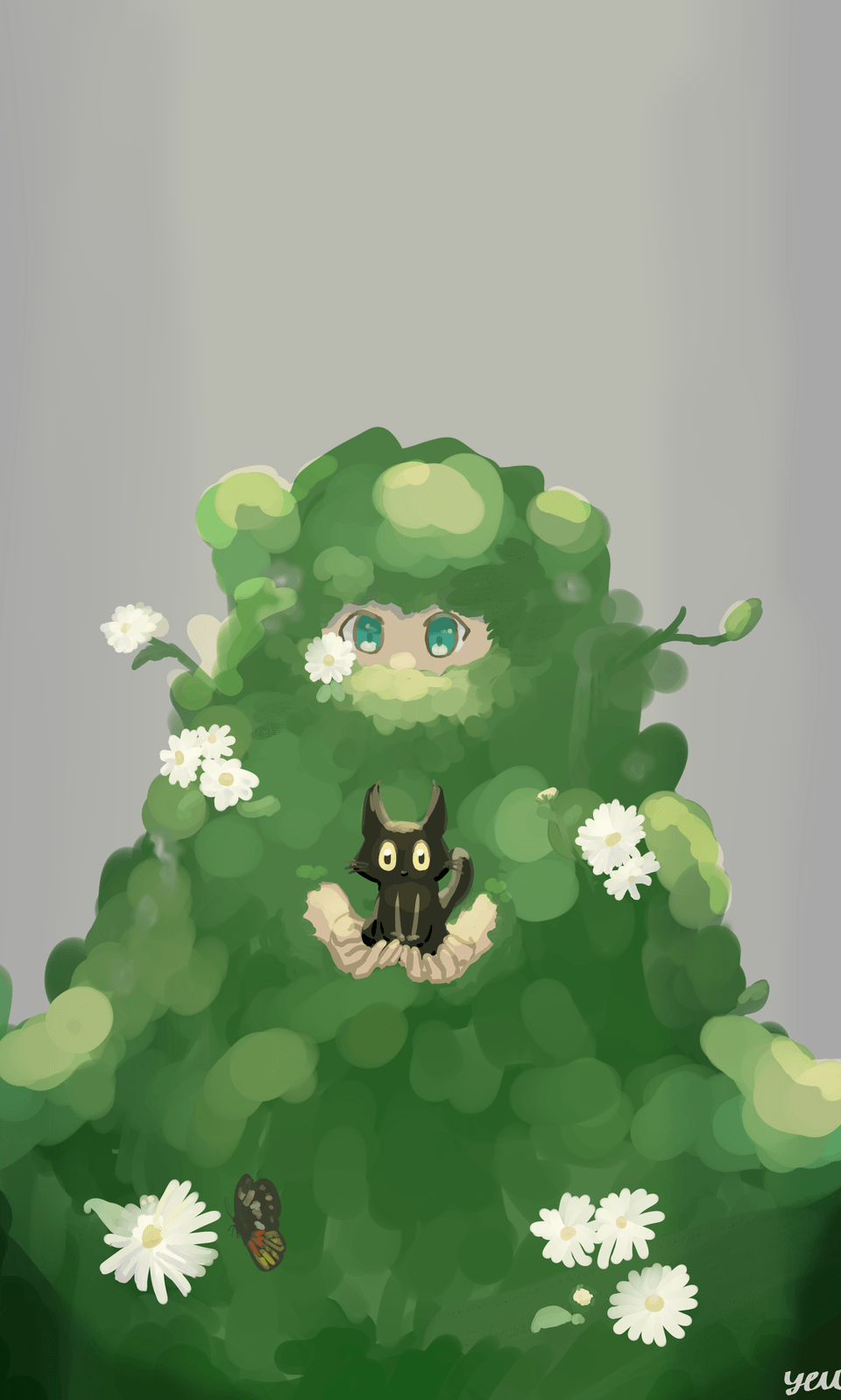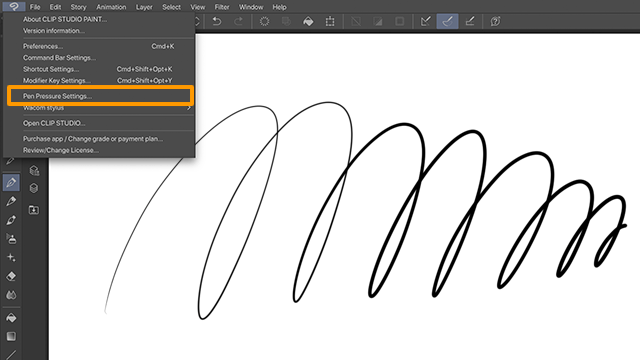Choosing a Hairstyle for Your Anime Character
Hello! My name is Liz Staley and I’m a long-time user of Clip Studio Paint (I started using the program back when it was known as Manga Studio 4!). I was a beta-tester on the Manga Studio 5 program and for Clip Studio Paint, and I have written three books and several video courses about the program. Many of you probably know my name from those books, in fact. I write weekly posts on Graphixly.com and on CSP Tips, so be sure to come back every week to learn more Clip Studio Tips and Tricks from me!
Anime characters have a reputation for having some of the wildest and craziest hairstyles of all types of entertainment. And though anime hairstyles are only limited by the imagination of the creator, there are certain tropes and stereotypes that go along with types of hairstyles. You can use these tropes to either inform your audience of the type of character you’re creating using visual shorthand, or subvert their expectations by giving a hairstyle trope to a character with a very different personality.
I did some research around the internet for this article, including articles on TVTropes and such. I found from this research that everyone seems to have different ideas of what these hairstyles mean, but that some traits did show up in multiple sources.
In this article we will cover the following topics:
Gravity-defying Hair
Hair Covering the Eyes
Odangos
Spiral Hair
Ahoge
Hime Hair
Anime Hair Colors
Let’s get drawing
Gravity-Defying Hair
One of the best-known anime hairstyles is the spiky and gravity-defying hairstyle. Whether coming just a few inches off the head or several feet, this is sometimes known as the “protagonist hair”. Anime characters with this hair include Son Goku from Dragonball/Dragonball Z, Deku and Bakugo from My Hero Academia, and Yugi from Yu-gi-oh.
The spiky, wild, gravity-defying hair usually indicates a character who is wild, cool, and probably hot-blooded.
Hair Covering the Eyes
This hairstyle consists of hair covering one eye all or most of the time. Characters with this hairstyle are usually shy, isolated, “emo”, or may be hiding something emotionally or in their past. Though it’s not anime, one of the best examples of this type of character is Violet from “The Incredibles”. She begins the movie with her hair covering one eye because she is shy and feels invisible.
Other anime characters with this hairstyle include Erza from Fairtale, Sanji from ONE PIECE, Rem from Re:Zero, and Seiji from Yoroiden: Samurai Troopers.
Odangos
The Odango hairstyle, named after a traditional type of Japanese dumpling, consists of one or more buns on the character’s head. The most common number of odando is two, at 45 degrees from the top of the head. This hairstyle is usually associated with Chinese characters, but it also is associated with young and innocent characters. Note that usually Odango buns are at the top of the head and not worn over the ears.
Anime characters with the Odango hairstyle are Usagi Tsukino from Sailor Moon, Mei Chang from Fullmetal Alchemist, Shampoo from Ranma ½, Chun-li from Street Fighter, and Miaka from Fushigi Yuugi.
Spiral Hair/Ojou Curls
Spiral Hair/Hair Drills/Ojou Ringlets are representative of Victorian-era “Western” feminine ideals. This hairstyle is characterized by at least two tight spiral “drill” curls, usually framing the character’s face. Characters with this hairstyle are usually of high social status (or act like they are!), or are royalty of some kind.
Characters with this hairstyle include B-ko from Project A-ko, Mami Tomoe from Madoka Magica, and Ayame Minamikujou from Silver Spoon.
Ahoge
When a character has one or two hair strands that stick up in the air, it’s called an Ahoge. Ahoge is translated as “stupid hair” in Japanese. Characters with ahoge are usually naive, funny characters who are airheads or loud (but are often sincere).
Characters with the Ahoge hairstyle include Edward Elric from Fullmetal Alchemist, Ahiru from Princess Tutu, and Red Blood Cell from Cells at Work.
Hime Hair
Hime is the Japanese word for Princess, and this hairstyle is thought to be from the court style of the Heian period. The Hime Hairstyle consists of perfectly straight and level bangs trimmed just above the eyes, with chin or shoulder length level sidebangs, and the rest of the hair either worn up in a hairstyle or long and straight.These characters are often royalty or of high social status.
Some characters with Hime hairstyles are Chichi from DragonballZ, Hinata Hyuga from Naruto, and Ayeka from Tenchi Muyo.
Anime Hair Colors
Hair color is another part of anime that has become a trope. Everyone associates anime with big eyes and crazy hair colors. Throughout the history of manga, black and white has always been used for printing because of its low cost. Because the manga pages were always black and white, there was usually only a few chances for a mangaka to draw their characters in color - usually on covers and perhaps an internal color page for the most popular manga. Starting in the 1970’s, mangaka started experimenting with using all kinds of colors for their characters on these scant color pages. The same characters would end up with different color hair on just about every cover. After some time, mangaka started to assign their characters one hair color for their characters.
The color you choose for a character’s hair can also tell your readers about that character. As with hairstyles, these are tropes and not rules that are set in stone. But it can be helpful to know what an audience might think a character will be like when they see their hair color, because they might have expectations - even if they’re subconscious ones!
Black: Black hair usually is used for a character who is honest, determined, independent, practical, and traditional. This color can also look macabre or be used for cruel characters.
White or Silver: Silver or white hair can indicate a magical or unnatural character. These characters are usually serene and skillful. If the hair is more gray than silver, the character is likely to be calm and logical.
Pink: Pink signifies a character who is young, cheerful, and innocent. Feminine, naive, delicate, and benevolent are also characteristics of the pink-haired character. A male character with pink hair may be a bit mischievous.
Purple: These characters are powerful and usually noble, elegant, and selfish. This can also be a magical and mysterious hair color as well. Lavender shades tend to be calmer, more delicate, and don’t like conflict. Darker tones of purple may indicate an aggressive character.
Red: Characters with red hair are usually aggressive, passionate, adventurous, enthusiastic, and seductive. These characters have explosive emotions that match their fiery colored hair.
Blonde/Yellow: Blond-haired characters are usually European or American in manga. Just like the stereotype, sometimes blonde characters are dumb, immature, or self-centered. However, they can also be happy-go-lucky, confident, and stubborn. Blonde men in anime tend to be of the “prince” variety.
Green: Green hair is associated with calm, relaxed, reliable, and tolerant characters. However, the green haired character can also be jealous, evil, sensitive, and toxic.
Blue: Blue-haired characters are sometimes cold, calm, and isolated from others. They may have magic or supernatural abilities, and are usually sensitive to emotions (their own or the emotions of others). These characters tend to be wise, talented, mature, and introverted.
Brown: Like black, this color is usually used for more normal “everyday” manga. However, characters with brown hair don’t have to be normal. These characters are consistent, sincere, friendly, honest, practical, and persistent. Characters with brown hair are usually good to have as a friend.
Conclusion
These tropes aren’t rules for creating your characters, but knowing about them can help with your character creation process by knowing what some people expect when they see certain anime hairstyles or colors.
For more information on CLIP Studio Paint, please visit https://www.clipstudio.net/en or https://graphixly.com
























Comment